Rastafari
Rastas accord key importance to Haile Selassie, Emperor of Ethiopia between 1930 and 1974, who is regarded variously as the Second Coming of Jesus, Jah incarnate, or a human prophet.Rastas refer to their practices as "livity", which includes adhering to Ital dietary requirements, wearing their hair in dreadlocks, and following patriarchal gender roles.The religion developed after several Protestant Christian clergymen, most notably Leonard Howell, proclaimed that Haile Selassie's crowning as Emperor of Ethiopia in 1930 fulfilled a Biblical prophecy.[10] Although Rastafari focuses on Africa as a source of identity, it is a product of creolisation processes in the Americas,[11] described by the Hispanic studies scholars Margarite Fernández Olmos and Lizabeth Paravisini-Gebert as "a Creole religion, rooted in African, European, and Indian practices and beliefs".[29] The term "Rastafari" derives from "Ras Tafari Makonnen", the pre-regnal title of Haile Selassie, the former Ethiopian emperor who occupies a central role in Rasta belief.[44] Like Christianity, Rastafari treats the Bible as a holy book occupying a central place in its belief system,[45] with Rastas often adopting a literalist interpretation of its contents.[98] The movement began among Afro-Jamaicans who wanted to reject the British colonial culture that dominated Jamaica and replace it with a new identity based on a reclamation of their African heritage.[120] Rastas believe Biblical scripture explains the Atlantic slave trade,[121] and that the enslavement, exile, and exploitation of black Africans was punishment for failing to live up to their status as Jah's chosen people.[122] Many Rastas, adopting a Pan-Africanist ethos, have criticised the division of Africa into nation-states, regarding this as a Babylonian development,[123] and are often hostile to capitalist resource extraction from the continent.[154] As an extension of this view, Africa is considered the natural abode of black Africans—a continent where they can live according to African culture and tradition, and be themselves on a physical, emotional, and intellectual level.[163] The Rasta tendency to believe that socio-political change is inevitable opens the religion up to the criticism from the political left that it discourages attempts to alter the status quo.[166] Rasta discourse has traditionally presented women as morally weak, susceptible to deception by evil,[167] and impure while menstruating,[168] citing the Book of Leviticus and the writings of Paul the Apostle.[e][230] They regard it as having healing properties,[231] eulogise it for inducing feelings of "peace and love",[232] and claim that it cultivates a form of personal introspection that allows the smokers to discover their inner divinity.[241] Rastas have also advocated for the legalisation of cannabis in those jurisdictions where it is illegal;[242] in 2015, Jamaica decriminalized personal possession of marijuana up to two ounces and legalized it for medicinal and scientific purposes.[254] Ossie subsequently popularised this new Rastafari ritual music by playing at various groundings and groundations around Jamaica,[254] with songs like "Another Moses" and "Babylon Gone" reflecting Rasta influence.[256] Like calypso, reggae was a medium for social commentary,[257] although it demonstrated a wider use of radical political and Rasta themes than were previously present in Jamaican popular music.[310] Rastas believe that dreadlocks are promoted in the Bible, specifically in the Book of Numbers,[g][311] and regard them as a symbol of strength linked to the hair of the Biblical figure of Samson.[347] Garvey knew of Rastafari, but took a largely negative view of the religion;[348] he also became a critic of Haile Selassie,[349] calling him "a great coward" who rules a "country where black men are chained and flogged".[31] He preached that black Africans were superior to white Europeans and that Afro-Jamaicans should owe their allegiance to Haile Selassie rather than to King George V. The island's colonial authorities arrested him and charged him with sedition in 1934, resulting in a two-year imprisonment.[359] Jamaica's Rastas expressed contempt for many aspects of the island's society, viewing the government, police, bureaucracy, professional classes, and established churches as instruments of Babylon.[365] In 1959, the self-declared prophet and founder of the African Reform Church, Claudius Henry, sold thousands of tickets to Afro-Jamaicans, including many Rastas, for passage on a ship that he claimed would take them to Africa.[385] This helped to confer greater legitimacy on Rastafari,[386] with reggae and Rasta imagery being increasingly presented as a core part of Jamaica's cultural heritage for the growing tourist industry.[392] The significance of Rastafari messages in reggae also declined with the growing popularity of dancehall, a Jamaican musical genre that typically foregrounded lyrical themes of hyper-masculinity, violence, and sexual activity rather than religious symbolism.[401] The three most prominent branches are the House of Nyabinghi, the Bobo Ashanti, and the Twelve Tribes of Israel, although other important groups include the Church of Haile Selassie I, Inc., and the Fulfilled Rastafari.[432] Cashmore expressed the view that "whenever there are black people who sense an injust disparity between their own material conditions and those of the whites who surround them and tend to control major social institutions, the Rasta messages have relevance.[444] Cashmore found that some British Rastas who had more militant views left the religion after finding its focus on reasoning and music insufficient for the struggle against white domination and racism.[474] One West African group that wear dreadlocks are the Baye Faal, a Mouride sect in Senegambia, some of whose practitioners have started calling themselves "Rastas" in reference to their visual similarity to Rastafari.[484] During the 1950s and 1960s, Rastas were among the thousands of Caribbean migrants who settled in the United Kingdom,[485] leading to small groups appearing in areas of London such as Brixton[486] and Notting Hill in the 1950s.[463] By the late 1960s, Rastafari had attracted converts from the second generation of British Caribbean people,[463] spreading beyond London to cities like Birmingham, Leicester, Liverpool, Manchester, and Bristol.[449] Rastafari also established itself in various continental European countries, among them the Netherlands, Germany,[491] Portugal, Ukraine,[492][493] and France, gaining a particular foothold among black migrant populations but also attracting white converts.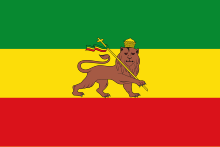

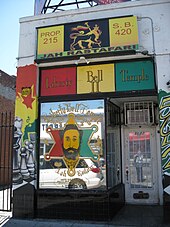

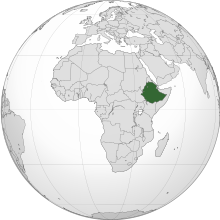
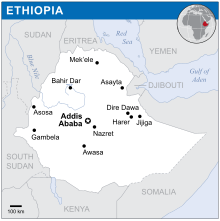


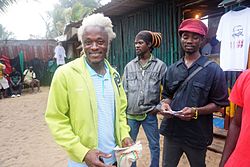
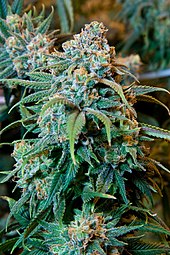

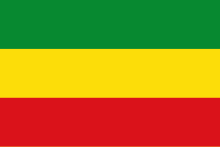

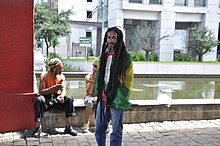

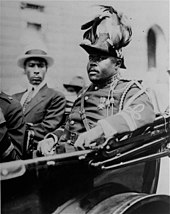
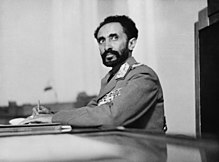


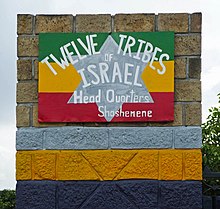
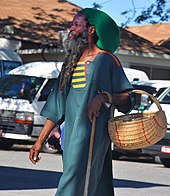
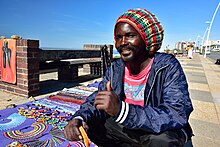


lion of JudahAbrahamicJamaicanew religious movementsocial movementscholars of religionmonotheisticpartially resides within each individualHaile SelassieEmperor of EthiopiaSecond ComingJah incarnateAfrocentricAfrican diasporaPromised Landlivitydreadlockspatriarchalsmoking of cannabissacramentAfro-JamaicanBritish colonial cultureEthiopianismBack-to-Africa movementblack nationalistMarcus GarveyProtestant ChristianLeonard HowellcounterculturalreggaeBob MarleyMansions of RastafariNyahbinghiBobo AshantiTwelve Tribes of IsraelZeerustSouth AfricaAbrahamic religionrevitalisation movementcreolisationHispanic studiesworld religionphilosophyspiritualityAfrican nationalismpan-Africanismnew social movementRace Relations Act 1976ethnicEthiopian emperorEthiopian Semitic languagescatechismorthodoxheterodoxPeter B. ClarkeChristianJewishliteralist interpretationBook of RevelationAmharicThe Promised KeyRobert Athlyi RogersHoly PibyFitz Balintine PettersburgRoyal Parchment Scroll of Black SupremacyKebra NagastmonotheistsJehovahOld Testamentimmanencemysticismspirit possessionKuminaConvincedepiction of him as a white Europeanthe DevilAntichristmessiahTrinityHoly SpiritSolomonQueen of ShebaKing of KingsErmias Sahle SelassieGospel of LukeRasta views on raceAfro-JamaicansEurope and whitenessbelief in the inferiority of black peoplesuperiority of white peopleIsraeliteschosen peopleJudaismthe ancient Israelites is a false claimcovenantBlack supremacyblack African raceracismWestern societycolonialismcapitalismBabylonMesopotamianthe Israelites were held captiveAtlantic slave tradeaphorismJerusalemUnited Nations1983–1985 famine in EthiopiamillenarianDay of Judgmentnuclear warBook of DanielRasta views of the afterlifeLeonard E. BarrettreincarnationAfrican diaspora religionsancestor venerationBarbadosrastacapblack nationalismMaureen Warner-Lewispolitical leftRocky DawuniGrenadaPeople's Revolutionary Government